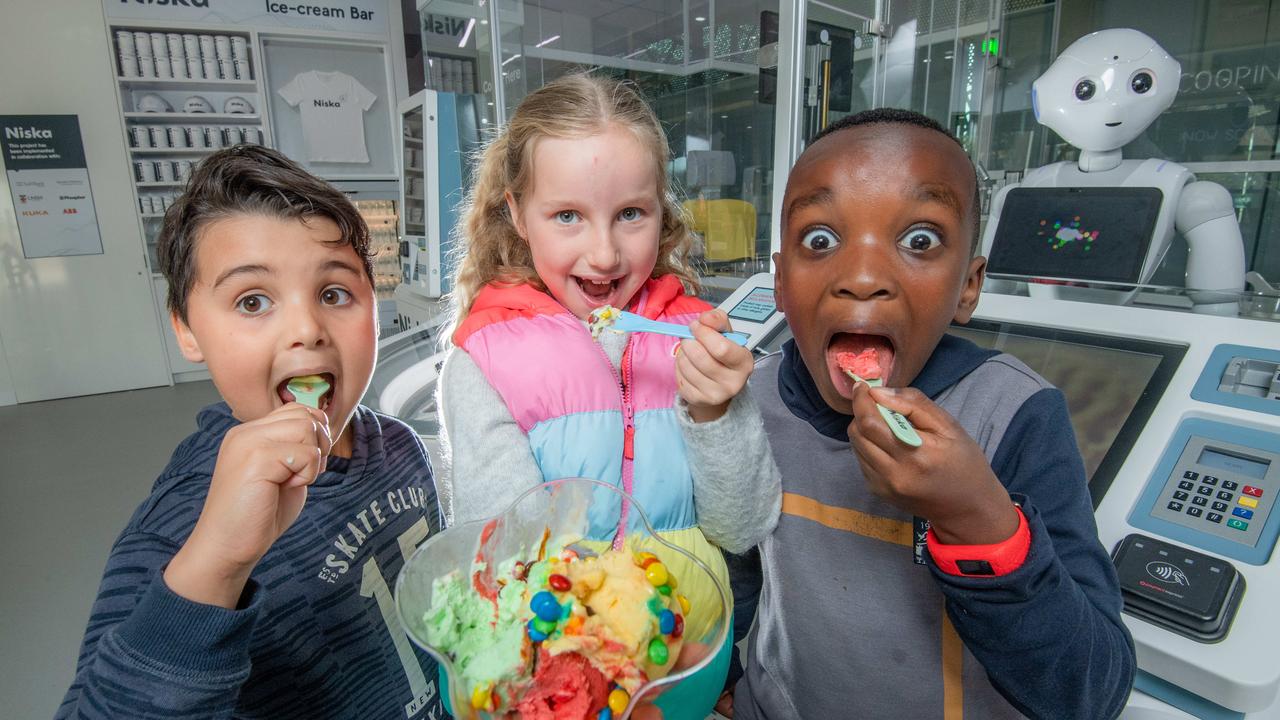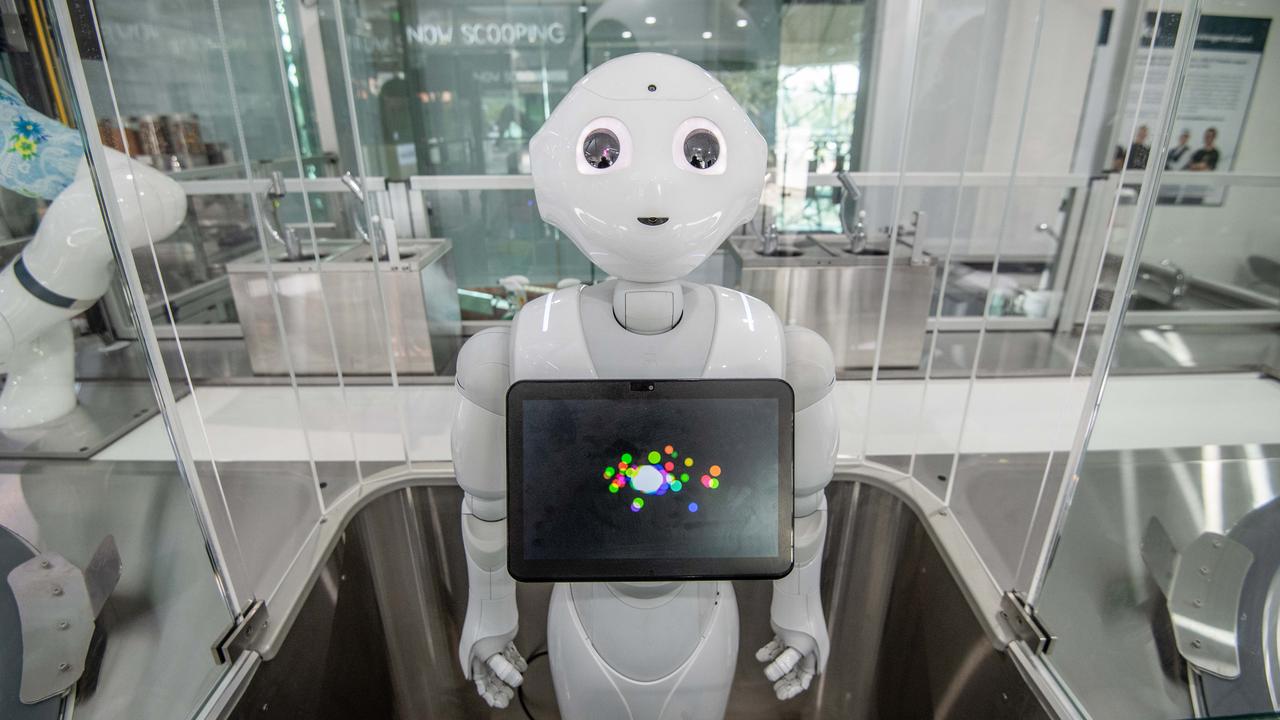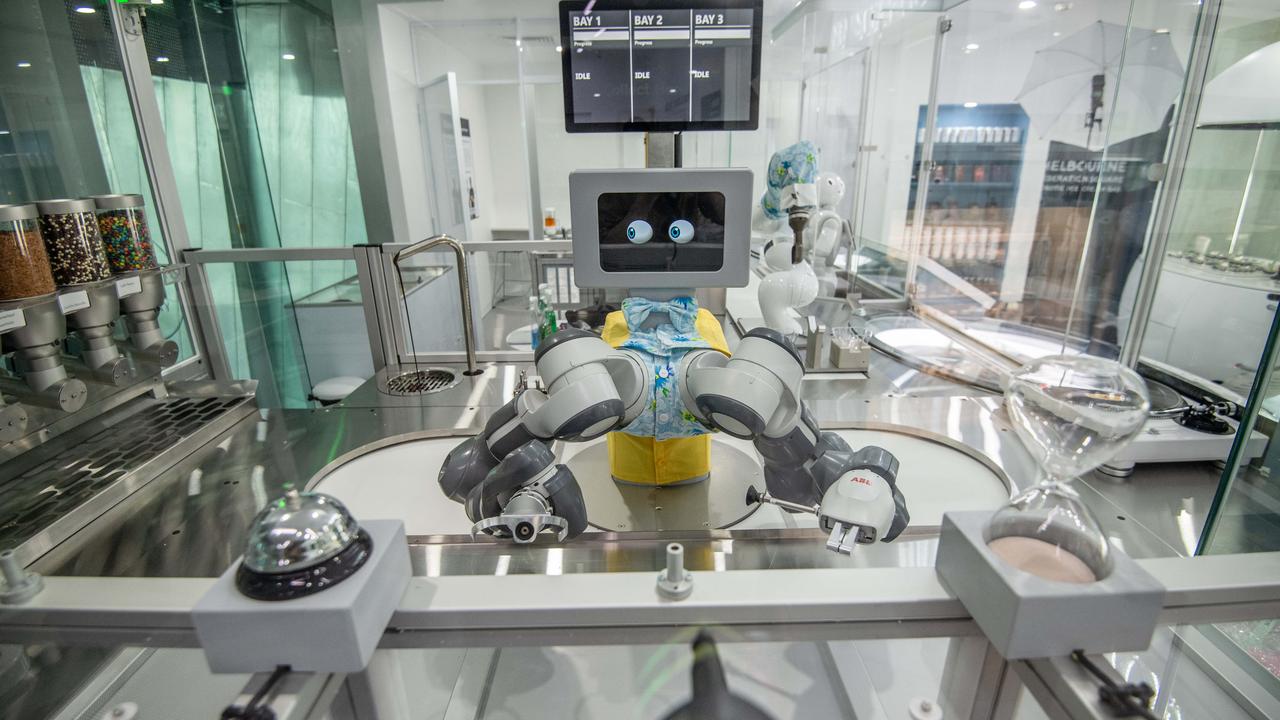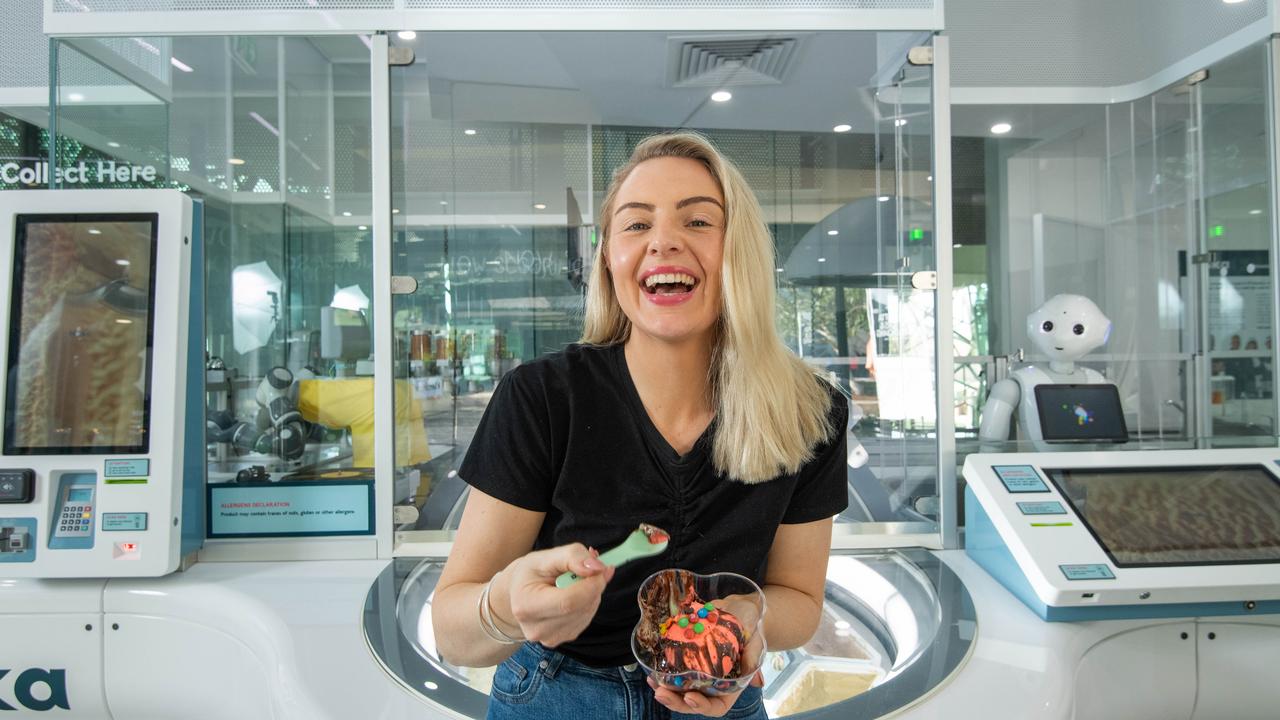Customers line up for ice cream at Australia’s first robotic shop
Robots served ice cream to excited kids on day one at Australia’s first robotic shop, in a move said to be about enhancing the customer experience rather than taking humans’ jobs

READING LEVEL: GREEN
Australia’s first robotic shop opened for business on Tuesday, with three robots scooping and serving ice cream to customers.
At Niska ice cream bar at Melbourne’s Federation Square in Victoria, a social humanoid* robot named Pepper took the orders, Eka scooped the ice cream and Tony added the sauce and nuts and other condiments.
Pepper, Eka and Tony danced, waved flags, played records on an old-fashioned record player and changed costumes to deliver an interactive* experience with “a sense of theatre”.


Niska co-founder and CEO Kate Orlova said the company aimed to transform the retail* experience in Australia, with this ice cream bar just the first to feature the technology.
“There’s a huge opportunity to introduce robotics into a retail environment,” she said.
“We’d love to see robots in every store.”
And despite half of Australian workers surveyed recently reporting that their jobs have changed as a result of automation*, Ms Orlova said her robots were not created to replace traditional roles. Rather, they were designed to enhance* the overall customer experience.
“Robots can’t replace human beings. But what robots are good at doing is repetitive tasks, such as scooping ice cream. This frees up staff to focus on customer service while the ice cream is being served.”

WILL ROBOTS TAKE HUMANS’ JOBS?
A report released earlier this year by job company Hays revealed half of Australian workers surveyed said their jobs have changed as a result of automation and 18 per cent said their job responsibilities have been impacted “significantly” by automation, with their roles changing completely or becoming redundant*.
A further 32 per cent have seen only a “partial” effect.
Research from management company McKinsey suggests that 5 per cent of jobs will be fully automated in the future and about 60 per cent of jobs will have at least a third of the role’s tasks automated, according to online magazine Inside Retail.
GLOSSARY
- humanoid: like a human
- interactive: two people or things influencing each other
- retail: sale of things to people
- automation: use of automatic equipment to do a task
- enhance: make better
- redundant: no longer needed
EXTRA READING
Feeling sick? Pepper the robot is here to help
Robot builds three-bedroom house in three days
Robot dog’s new trick — it opens doors
Robot with skin can sense humans nearby
QUICK QUIZ
- Name the three robots.
- Apart from scoop ice cream, what other things did the robots do?
- Who is Ms Orlova?
- With the help of robots, what will humans be able to concentrate on in the ice cream shop?
- What proportion of jobs will be fully automated in the future, according to the McKinsey research?
LISTEN TO THIS STORY
CLASSROOM ACTIVITIES
1. School Robots
Work with a partner and make a list of all the jobs or tasks in your school that a robot could take over. Remember it should just be the boring, repetitive tasks as they are not a human, just an electronic worker!
Write down the job and then next to each one, the individual tasks that need to be completed as part of that job.
Eg: Yard monitors – Pick up rubbish in the playground and school grounds
Time: allow 15 minutes to complete this activity
Curriculum Links: English, Design and technologies, Critical and creative thinking, Personal and social
2. Extension
Sixty per cent of jobs will have at least one third of their role automated in the future. Think of a job that a family member or friend does for a living. Write down their job title, some things that they do, and how automated robots could change this in the future. If you can’t think of any complete this task for a teacher.
Time: allow 15 minutes to complete this activity
Curriculum Links: English, Digital technologies, Critical and creative thinking
VCOP ACTIVITY
After reading the article, with a partner, highlight as many pieces of punctuation as you can find in green. Discuss how these are being used, where and how often. What level of the punctuation pyramid is the journalist using in this article?
HAVE YOUR SAY: Would you like a robot or a human to serve your ice cream? How do you feel about robots serving in other sorts of shops?
No one-word answers. Use full sentences to explain your thinking. No comments will be published until approved by editors.

